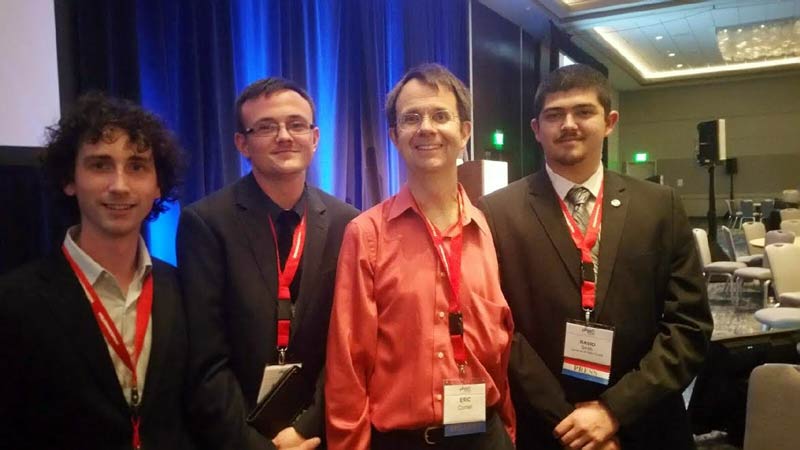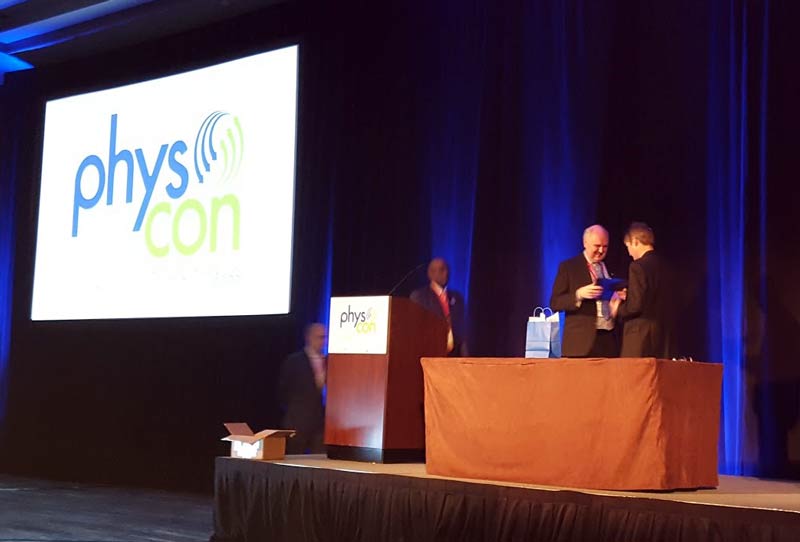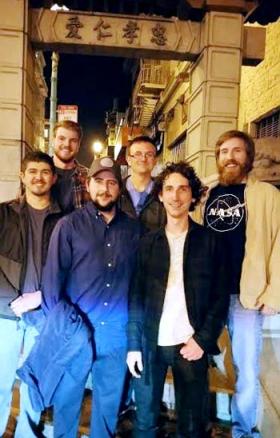Sigma Pi Sigma Physics Congress (PhysCon)
November 3, 2016 to November 5, 2016
San Francisco, CA
Meeting host: By:Andrew Truman, David Smith, James Amos
SPS Chapter:

After two and half days of amazing tours, plenary talks, workshops, and poster and art presentations, the 2016 Quadrennial Physics Congress of Sigma Pi Sigma came to a close. The closing banquet brought everyone together to recognize the accomplishments of all the students who presented their research and recognized achievements of physicists from across the country. Sigma Pi Sigma also honored two brilliant physicists for their achievements to the physics community. The banquet was followed by a long-awaited final presentation from Dr. Patrick Brady on the first-ever detection of gravitational waves from LIGO and what that means for the future of astronomy. (Note: see "Making Waves at PhysCon" for a student report on this talk.)
After Sigma Pi Sigma director Dr. Willie S. Rockward reflected on PhysCon, he awarded Dr. James Kakalios, professor at the University of Minnesota, the Andrew Gemant Award. This award recognizes someone who has contributed to the physics community by helping the community thrive in culture, humanities, or arts.
Kakalios was chosen for the award for his publication of The Physics of Superheroes, as well his dedication and service to the physics community. His popular freshman seminar, “Everything I Needed to Know About Physics I Learned from Reading Comic Books,” helped inspire young students to pursue a career in physics. Dr. Kakalios was also inducted into Sigma Pi Sigma as a national honorary member, one of the highest honors a physicist can receive in Sigma Pi Sigma.

The second award of the night was the Prize for Industrial Applications of Physics, which recognizes single or group industrial contributions to the physics research community. Dr. Rockward presented the award to Dr. Hendrik Hamann, researcher at the IBM T.J. Watson Research Center, for his various patents and physics research. Dr. Hamann has also served on government committees such as the National Science Foundation and the National Academy of Sciences. Dr. Hamann said that he wanted to take the $10,000 prize and use it to sponsor students’ pursuit of higher education in physics. Dr. Hamann was also inducted into Sigma Pi Sigma as a national honorary member.
Dr. Rockward closed out the night with a discussion of the location for the next PhysCon, and suggested that the Congress could be hosted more frequently than every four years. Among the possible locations for the next conference were Providence, Rhode Island, and maybe even Washington, D.C.!
After everyone had eaten their fill, the night wrapped up with the announcement of the winners of the poster presentations and art show.
The full list of poster winners is available here, and the art winners are here.
These students all received $200 (and a nice line on their CV).
We caught up with David Goodloe of Birmingham-Southern College, who won one of the awards in the Applied Physics poster category.
 “I was surprised that I won the award. I didn’t even know there was an award being given out for the poster presentations at PhysCon. When I looked up and saw the screen with my name on it, I said, ‘Cool.’ Being the only person from my school [here] and winning an award is cool and I am glad that I can show the schools, as well as the teachers, an accomplishment.” David said he would to use the money to help pay for his trip out to San Francisco.
“I was surprised that I won the award. I didn’t even know there was an award being given out for the poster presentations at PhysCon. When I looked up and saw the screen with my name on it, I said, ‘Cool.’ Being the only person from my school [here] and winning an award is cool and I am glad that I can show the schools, as well as the teachers, an accomplishment.” David said he would to use the money to help pay for his trip out to San Francisco.
With night drawing near, the banquet proved to be an excellent way to bring all the physicists at the conference together one last time and celebrate the closing of the event. It showed everyone there that we are a physics community that strives to innovate and advance our knowledge of the physical world, both in our galaxy and beyond, to the furthest reaches of the cosmos.